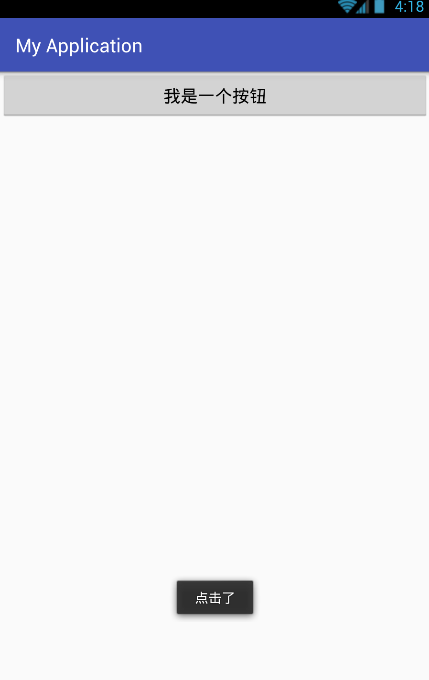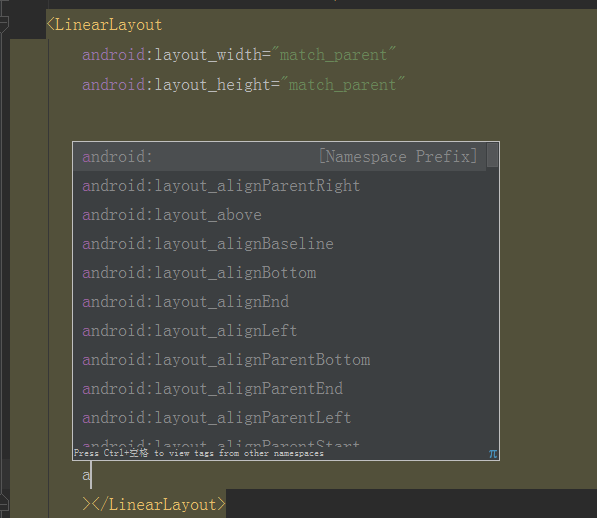自定義View之繼承LinearLayout
阿新 • • 發佈:2019-01-21
自定義View有三種方式:
1:完全自定義View,也就是繼承View,或者ViewGroup還有就是SurfaceView
2:半自定義View,所謂半自定View就是繼承SDK中已經寫好的一些View,比如LinearLayout、RelativeLayout、FragmentLayout、Dialog等等
3:混合自定義View,混合自定義就是在XML檔案中引入已經寫好的自定義View,例如:<com.xxx.view.MyView ><com.xxx.view.MyView/>
今天要給大家講的是,如何半自定義View
在繼承LinearLayout的時候,必須實現以下4種構造器中的一種,也可以是多種
每個構造器的用途都不同,不瞭解的可以看一下
今天先教大家使用第一種,LinearLayout(Context context)
public class MyView extends LinearLayout { private Button button; public MyView(final Context context) { super(context); button = new Button(context); /** * 方式1: */ // LinearLayout.LayoutParams layoutParams = new LinearLayout.LayoutParams(300,100);// button.setLayoutParams(layoutParams); /** * 方式2: */ addView(button); LinearLayout.LayoutParams layoutParams = (LayoutParams) button.getLayoutParams(); layoutParams.weight = 300; layoutParams.height = 100; button.setLayoutParams(layoutParams); button.setText("我是一個按鈕"); button.setOnClickListener(newOnClickListener() { @Override public void onClick(View v) { Toast.makeText(context,"點選了",Toast.LENGTH_SHORT).show(); } }); } }
public class MainActivity extends AppCompatActivity { @Override protected void onCreate(Bundle savedInstanceState) { super.onCreate(savedInstanceState); setContentView(new MyView(this)); } }

LinearLayout.LayoutParams這句的作用是為 button 設定它的 width 和 height
addView(button);因為是繼承自LinearLayout,所以addView的作用就是將一個view物件,新增入LinearLayout的“肚子裡”,其方式與以下完全相同
<LinearLayout android:layout_width="match_parent" android:layout_height="match_parent"> <Button android:layout_width="match_parent" android:layout_height="wrap_content" android:text="我是一個按鈕"/> </LinearLayout>
由於是繼承自LinearLayout,所以習慣寫XML佈局的同學注意了,java方式實現的方法與XML中的完全相同


